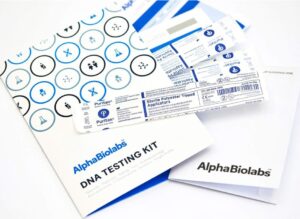Paternity DNA tests have been helping millions of people across the globe uncover biological relationships and gain clarity in family matters. They are the most reliable method for confirming a biological relationship between an alleged father and a child. But what are the requirements to conduct a paternity DNA test? In this blog post, we will break down the essential components of a paternity DNA test and provide you with all the information you need to undertake this process.
DNA Sample Collection
The first requirement for a paternity DNA test is collecting a DNA sample. The most common methods of DNA sample collection include:
Buccal Swab: This is the preferred and most convenient method for sample collection in paternity testing. A buccal swab is a cotton swab that is rubbed against the inside of the cheek to collect cheek cells, which contain DNA. It’s non-invasive, painless, and can be easily done at home.
Blood Sample: A blood sample can also be used for DNA testing, although it’s less common due to the invasive nature of the procedure.
It’s important to note that regardless of the method used, the DNA in cheek cells and blood cells is the same, so both provide accurate results.
Consent
Proper consent is an essential legal and ethical requirement in DNA testing. If the person being tested is an adult, they must give their consent. For children under the age of 18, a legal guardian must provide consent. In certain cases, such as legal disputes or court-ordered testing, additional permissions may be necessary.
Testing Kit and Laboratory
Paternity tests can be performed at home or in a clinic, depending on the circumstances. For home testing, a DNA test kit is required, which can be ordered from a reputable provider. This kit will include instructions on how to collect and store the sample, as well as a pre-addressed envelope for sending the sample back to the lab.

Choosing a reliable, accredited lab to perform the test is also crucial. The lab should follow stringent quality control procedures and use advanced genetic testing techniques to ensure accurate results.
Information and Documentation
You will also need to provide some basic information and documentation, such as full names and birth dates of the people being tested, contact information, and the reason for the test. Some labs might also ask for a photo of the people being tested to verify identities.
Payment
Paternity tests are typically not covered by insurance, so payment is another requirement. The cost varies depending on the testing company and whether the test is for personal knowledge or legal purposes. It’s advisable to check with the testing company beforehand to understand the total cost involved.
Conclusion
Undertaking a paternity DNA test requires careful consideration and understanding of the process. From sample collection and consent to selecting the appropriate test and laboratory, each step is integral to ensuring an accurate, reliable, and ethical test.
At Smart DNA, we are committed to guiding you through the entire process, offering home testing kits, detailed instructions, and the assurance of an accredited, professional laboratory to process your results. We prioritize your privacy and deliver results with maximum accuracy to help you find the clarity you seek. Remember, understanding the requirements of a paternity DNA test is the first step towards making informed decisions in your paternity testing journey.

